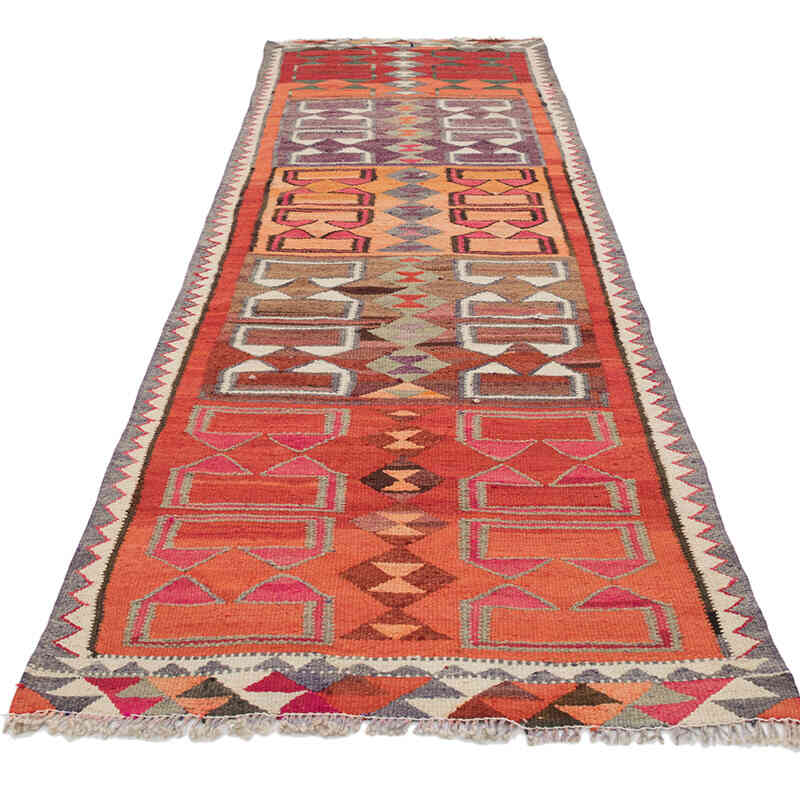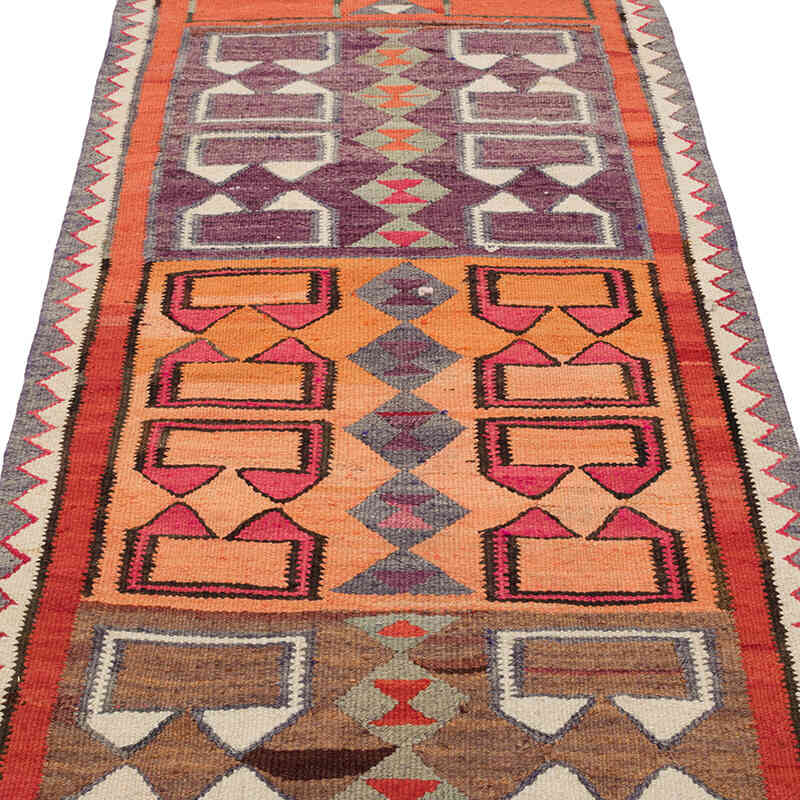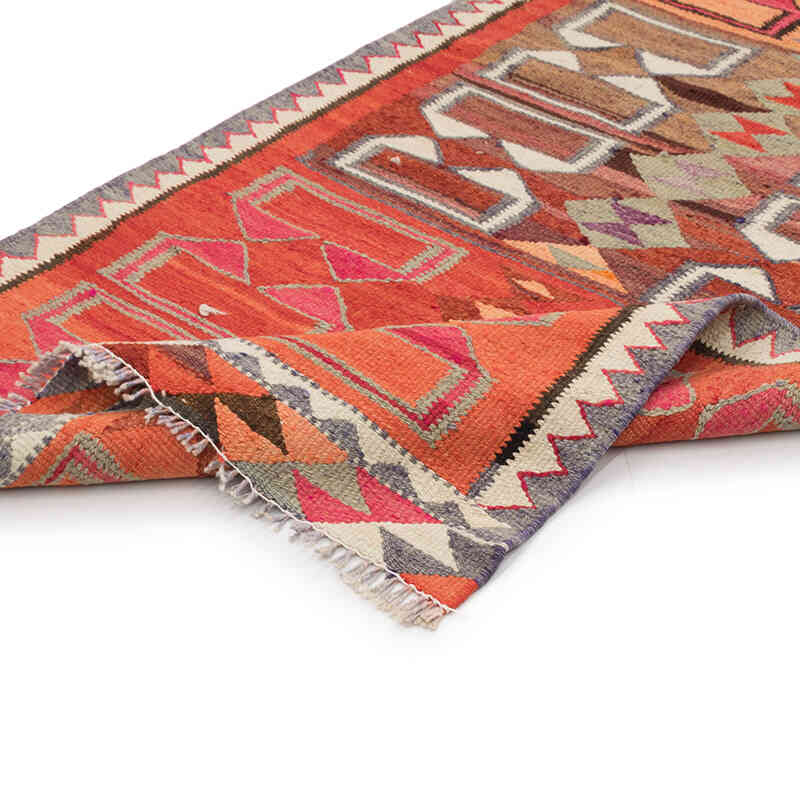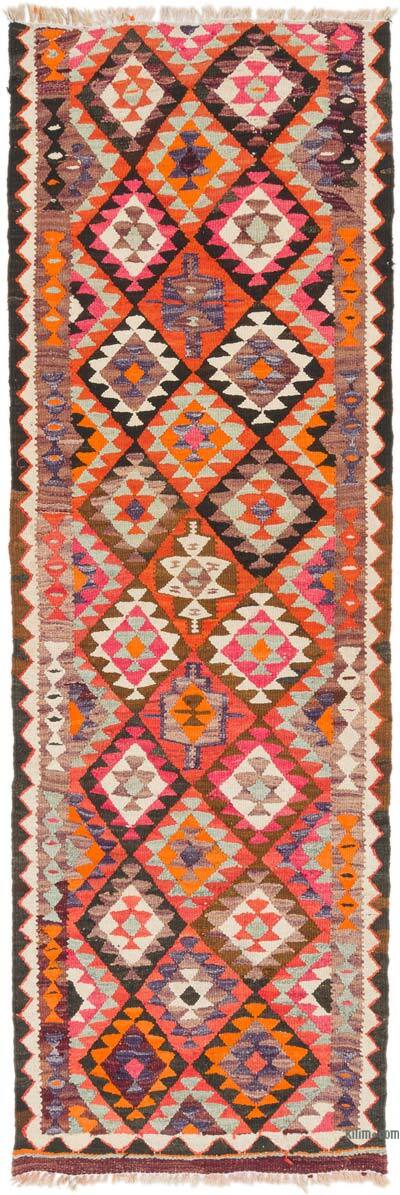Vintage Tribal Kilim Runner 3' 3" x 9' 11" (39" x 119")
Type:
Kilim RugsCollection:
Tribal RunnersID:
K0077133Size:
Material:
The designs feature a rich array of symbols representing tribal culture and Anatolian motifs, often in the form of medallions, diamonds, and other geometric shapes.
The designs feature a rich array of symbols representing tribal culture and Anatolian motifs, often in the form of medallions, diamonds, and other geometric shapes. These kilim runners are ideal for hallways and narrow spaces, offering a touch of ethnic charm and artisanal quality to any interior.
Herki kilims not only serve as functional floor coverings but also as artistic expressions of tribal identity, making each rug a unique cultural artifact.
Design Elements
- Structure:
- The rug features a long, rectangular shape typical of runners, making it suitable for hallways or narrow spaces.
- Divided into several sections or panels, each panel showcases distinct motifs and colors.
- Patterns:
- Geometric shapes dominate the design, including diamonds, triangles, and squares, all linking to tribal origins.
- Symmetrical balance is evident, providing a visually pleasing repetition of motifs across the length of the runner.
- Texture:
- The kilim technique creates a flat weave, giving the rug a unique texture that differs from pile rugs.
- This texture enhances the tactile experience and adds depth to the visual presentation.
Colors
- Color Palette:
- The rug boasts vibrant and warm colors, such as reds, oranges, purples, and browns.
- Complementary shades enhance the visual dynamism and attract attention to the intricate designs.
- Color Symbolism:
- Red represents strength and courage.
- Orange signifies warmth and energy.
- Purple symbolizes wisdom and dignity.
- Brown relates to earth and stability, grounding the overall design.
Main Motifs and Their Symbolism
- Diamonds:
- Diamond shapes often symbolize protection and are believed to ward off negative energies.
- The repetitive nature of the diamonds amplifies their protective qualities.
- Triangles:
- Triangles often represent the elements or directional forces, signifying strength and stability.
- The upward-pointing triangles may embody aspirations and ambition.
- Square Patterns:
- Squares reflect the concept of harmony and balance, representing family and community.
- The integration of squares throughout the runner emphasizes a connection to home and safety.
Summary
The vintage tribal kilim runner showcases a variety of design elements including geometric patterns and a structured layout that draws upon cultural heritage. The vibrant colors used throughout, such as red, orange, purple, and brown, not only enhance the visual impact but also carry deeper meanings, symbolizing strength, warmth, wisdom, and stability. The main motifs, including diamonds, triangles, and squares, serve specific purposes: offering protection, representing aspirations, and emphasizing community. This combination of design and symbolism creates a unique and culturally rich decorative piece.
- Ships in 1-4 business days
- Only one in stock, handmade, unique
- Free shipping via FedEx Express. Easy returns
- Contact us or add a note to your order if you want us to delay your shipping.
- Request more info if you want this rug shorter or narrower
Colors may appear slightly different across various monitors due to screen settings device differences, and external lighting conditions. If color accuracy is important for your space, we recommend viewing the rug on multiple devices or contacting us for a detailed color description. We can provide detailed photos and references using Sherwin-Williams, Benjamin Moore, Pantone, or even Crayola crayons.
You can also visualize most of our products in your own room with AR (augmented reality) on an iPhone or iPad.
Return Policy
Need a rug pad? We recommend RugPadUSA























Great kilim